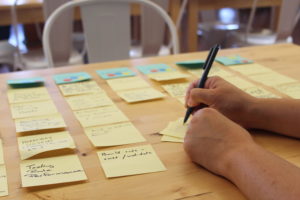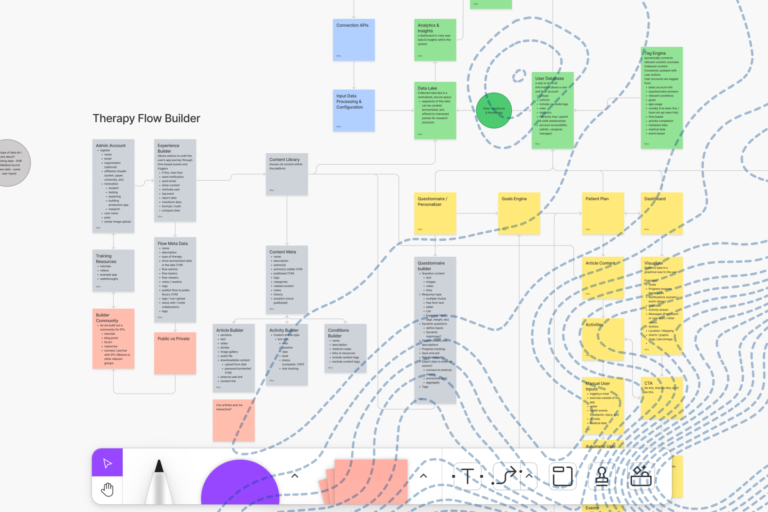Fashioning an expert speed to market strategy is top of mind for startups and venture capital firms approaching a digital product development project. And it should be. With 37% of failed startups reporting that they ran out of funding in 2020, it’s reasonable to focus on time-to-profitability.
While lack of funds stands as the number one startup killer, it’s also important to note that 25.5% of failed startups attributed their failure to not having a business plan and 22.8% reported not having the right team. Poor UX, no market need, and loss of focus are also among the top reasons startups couldn’t survive.
With so much on the line for startups, how should growth-focused leaders balance the need for a speedy go-to-market strategy against guaranteeing exceptional product quality?
Prioritizing Speed to Market in Digital Product Development
Our stance is that product leaders should never have to choose between speed and quality. Product leaders can honor the original concept and facilitate rapid product development when you have the right team. We’ve enabled startups to succeed by focusing on speed, expertise, and leadership: a golden trifecta that’s often inaccessible for in-house teams.
Due to a lack of resources and limited experience in new product development, internal teams often struggle to scale products properly. To ensure startups aren’t sacrificing product-market fit for speedy development, they need to work with business experts that know their technology and skilled technologists that understand their industry. A missing connection between technology and business intelligence is often the catalyst for common startup missteps to occur.
Our Rapid Product Development Process
In our ten years of bringing digital products to market, we’ve learned that one-size-fits-all approaches don’t produce high-quality results. Our solution was to design a repeatable but highly flexible process that shapeshifts to fit business needs, while retaining enough structure to consistently deliver results to our customers.
And since one of the most common concerns that customers come to us with is the need for rapid time-to-market, it’s also a primary concern for our product methodology. Here’s how we approach product development with a focus on speed to market at Arcweb:
1. What is Arcweb’s rapid product build strategy?
Fundamentally, we approach rapid product builds the same way we approach all projects. We start with strategy, then move into product design & development, and always end with quality assurance and a transition into long-term maintenance (which we call “Sustain”).
Learn how we put decision-making power back in patients’ hands by building the world’s first digital advanced directive.
When we’re focused on speed to market, however, we take special care to consider team size and composition. Allocating the right amount of people and handpicking talent with the right expertise for each phase of a project is essential for a rapid, efficient build. We’re also laser-focused on early planning for major milestones, ensuring the team works as a cohesive whole (rather than one feature holding up the rest of the project).
2. What is a “speed to market” timeframe?
Ultimately, “rapid” depends on the product and the needs of the client. For a single mobile application, a couple of months might be considered rapid. For a full-fledged digital platform that combines web and mobile, rapid might mean several months to a year. Our delivery teams have launched a product in as little as six months for startups that were under intense time restraints, but ultimately it’s all relative. That’s why our team puts so much emphasis on understanding business needs before a single line of code is written.
3. How much does a rapid product build cost?
The two main factors that will impact the price of your project are team size and project scope. The larger the team, the faster a project consumes resources—not to mention the cost of finding, vetting, hiring, and onboarding individual talent with the right technological and industry experience in siloed places will cost you. (That’s why we use consistent teams who have years of experience working together.)
The scope is just as important—a more robust 1.0 means a bigger pre-launch investment. Arcweb’s product teams are experts in determining what tools are necessary for a successful version 1.0 and which features are “nice-to-have” that you can postpone for later, helping our customers maximize results for their investment.
4. How do we ensure a rapid build delivers results?
Strategy is the difference between a software expert and a product expert. We engage your team from Day 1 to ensure that our efforts are driven by your business needs and KPIs. We also make heavy use of co-design methods to facilitate internal buy-in and design studios to gather perspectives from your entire team.
It’s also important to remember that with rapid product builds, there is a much smaller window to address issues that arise. A one-month setback may not be a big deal on a 2-year project—but if you’re trying to launch a product in six months, it can be make-or-break. We put such a big emphasis on accounting for any risks and challenges before a project begins.
Identifying Challenges and Risk Mitigation
Every time we approach custom software development, we get a birds’ eye view of the project before a single line of code is written. We identify the main challenges of the product and anticipate how we’re going to tackle them at each stage. Once the major obstacles are forecasted, we incorporate them into our overall project strategy, architecture, and roadmap—ensuring that development moves smoothly from start to finish.
The most common risks in software development often involve unforeseen complications and scalability issues.
Here are a few common obstacles we always watch out for in any project:
- Industry-specific compliance requirements
- Complex user needs
- Difficult technology integrations
- Additional stakeholders
We prioritize making a growth-ready product that can smoothly transition in the long term and won’t demand massive, expensive rebuilds later in the product’s life cycle. Inexperienced teams with tight deadlines tend to value convenience over durability and cost companies more resources in the long term.
Determine the feasibility of a speed-to-market build
Another prime consideration before embarking on a rapid product build is whether or not your product is feasible to build in the time allotted. It’s almost always better to rethink, delay, or outright cancel a product than it is to rush it out the door and have it fail.
In a software development project with a venture-backed SaaS company, the Arcweb team used lean methodologies to help the company determine if building a specific function set would be a value-add for their customers. We worked closely with their team to distinguish nice-to-haves from need-to-haves by using rapid prototyping to test the overall product hypothesis, and ultimately determined the feature was not the right fit for user needs. That decision allowed PeopleLinx to save 77% of its scoped budget.
“As a venture-backed startup in a dynamic category, we need to make quick decisions about what we’re building and why. Arcweb’s rapid prototyping is ideal for that.”
Kevin O’Nell | Former CEO of PeopleLinx now FRONTLINE Selling
We pride ourselves on being strong strategic partners and good stewards of our customer’s resources. So while scrapping a project or a major rework is always a tough decision, it’s better than the alternative.
Avoid hiring an inexperienced team that might misuse time and company resources. Without a team with a strong background in rapid product development, you risk unnecessarily high burn rates and overall underperformance.
Our long track-record of successful product launches proves that partnering with a ready-made, cross-functional product development team is the ideal speed to market strategy for startups. We are known for deploying diverse, cross-functional teams that have wide and deep industry knowledge and extensive experience in all aspects of product development.
If you’re on the hunt for a team that has both the business technology smarts to perform well and the nimble mindset to do it efficiently, reach out to our development team. And good luck on your new product development journey.




